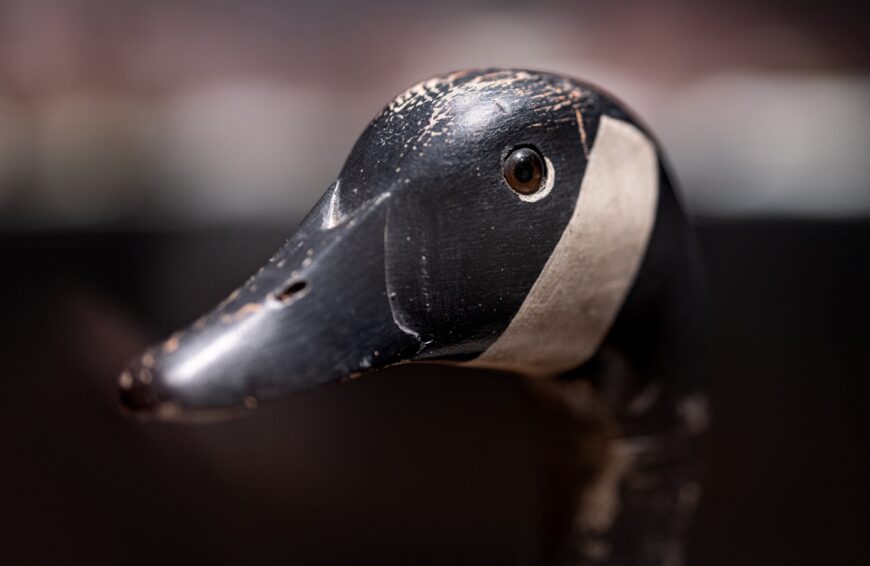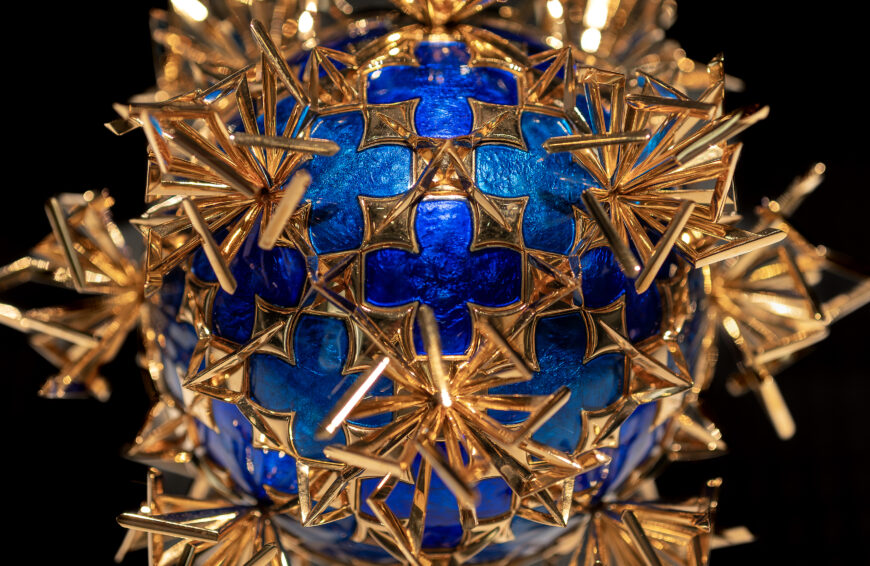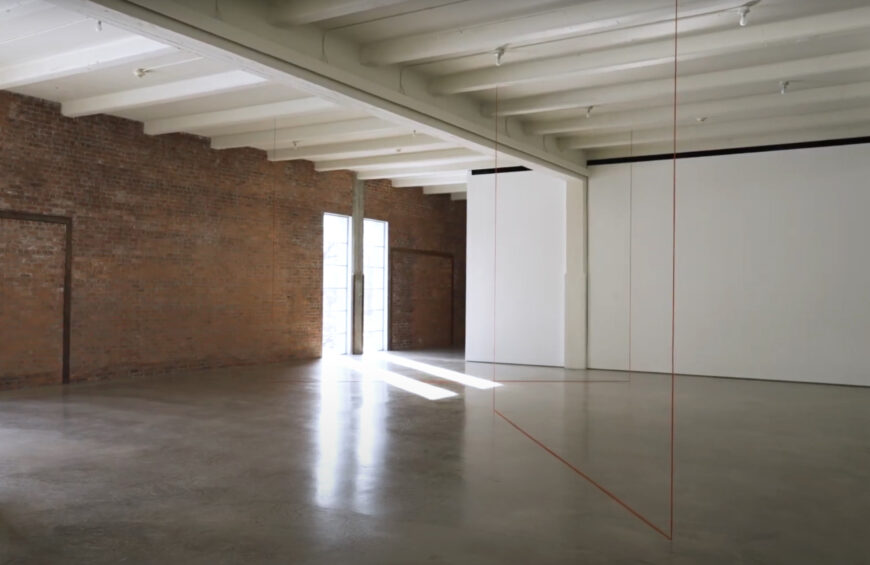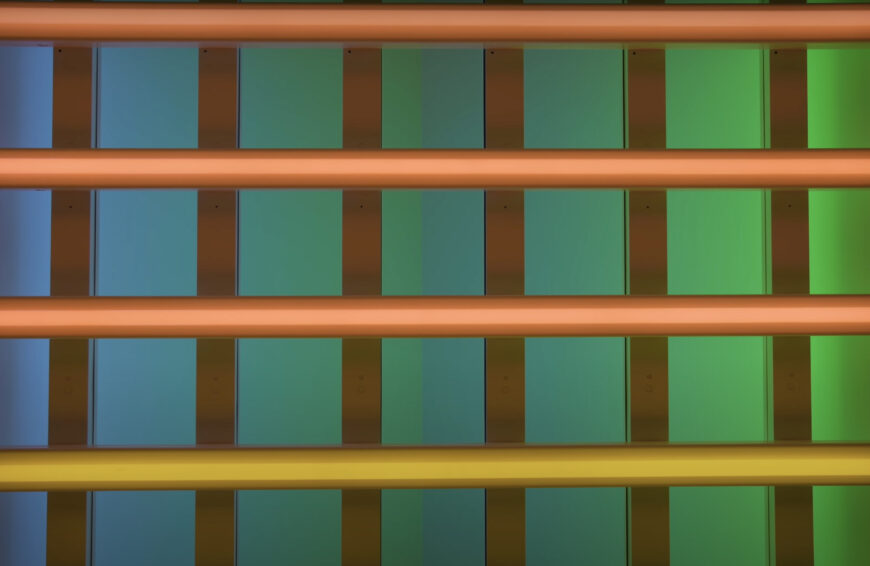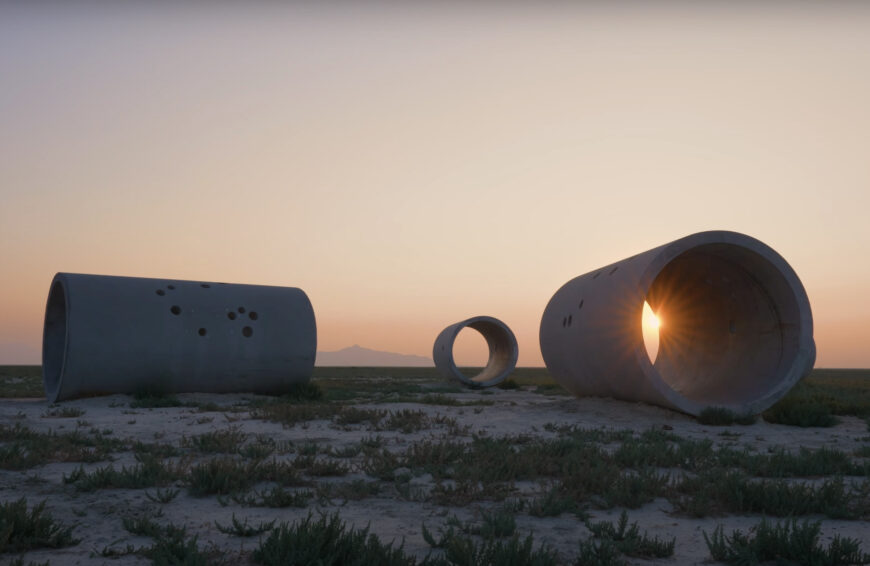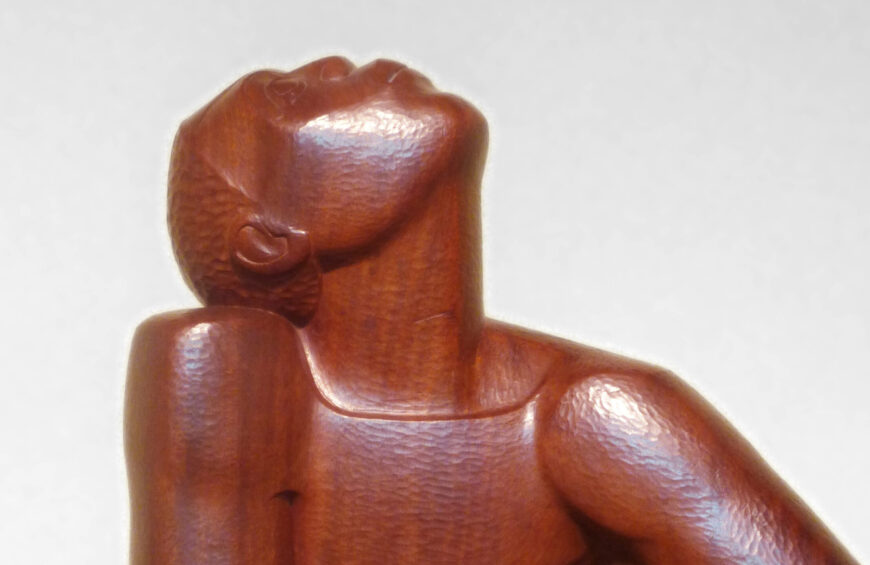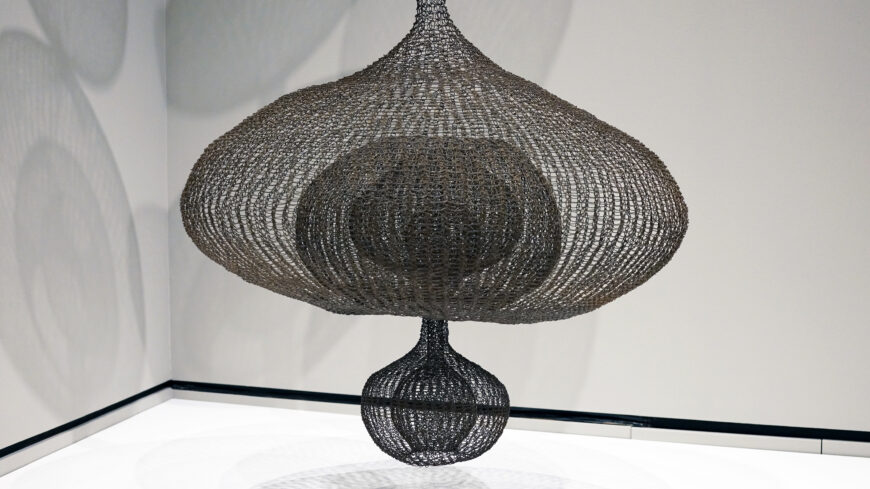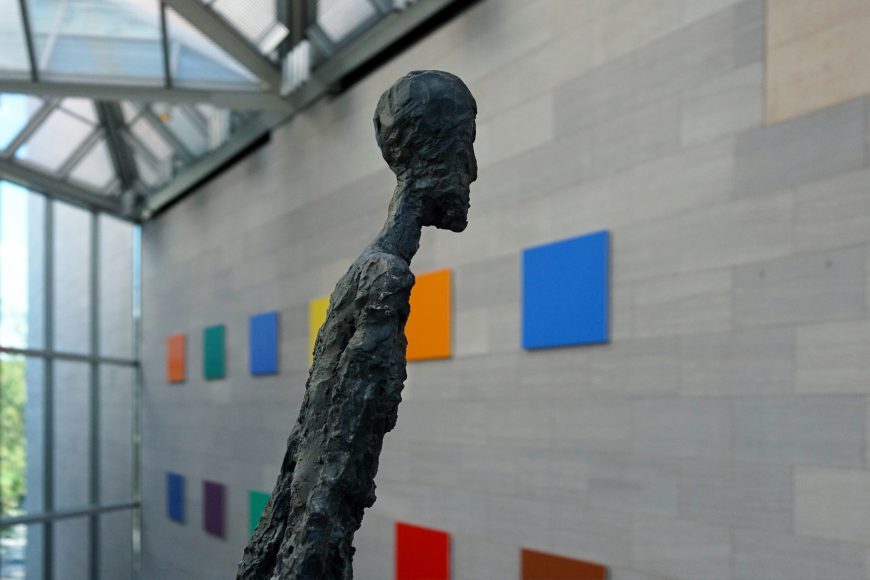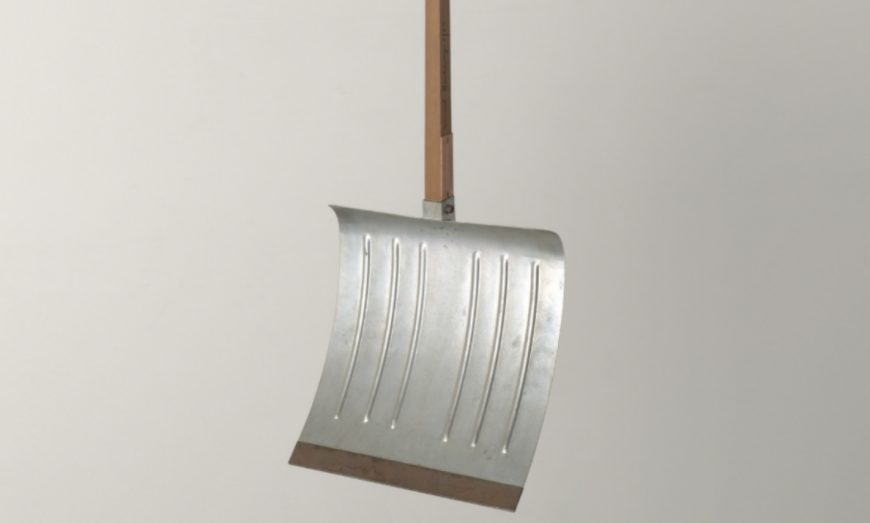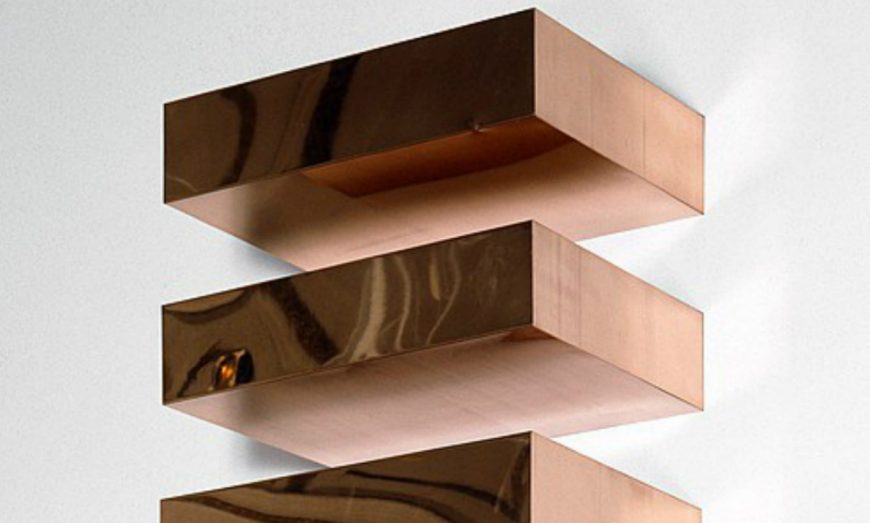Bontecou’s steel and canvas form appears both threatening and vulnerable, situated squarely in the Cold War era that it was created.
Lee Bontecou, Untitled (No. 25), 1960, welded steel, canvas, copper wire, 182.88 x 142.24 x 50.8 cm (Virginia Museum of Fine Arts, Richmond) © Estate of Lee Bontecou. Speakers: Dr. Sarah Eckhardt, Associate Curator of Modern and Contemporary Art, Virginia Museum of Fine Arts and Dr. Steven Zucker, Smarthistory
0:00:05.3 Dr. Steven Zucker: We’re in the Virginia Museum of Fine Arts looking at a frankly terrifying work of art. This is by Lee Bontecou. It’s Untitled No. 25. Lee Bontecou, an American artist, learned to weld to make her art at the Skowhegan School up in Maine. For a woman to take on welding as part of their art practice in the 1950s was simply unheard of.
0:00:29.3 Dr. Sarah Eckhardt: I think it’s difficult for us now to understand the weight of gender norms, just how restrictive they were.
0:00:38.0 Dr. Steven Zucker: By the time this was produced, the artist had taken a studio in Lower Manhattan with her acetylene tanks and donned her protective masks and produced these armatures, and then would begin to fill in, almost like fragments of stained glass in a medieval stained glass window, the in-between spaces. But here she uses this heavy industrial canvas instead of beautiful pieces of glass.
0:01:04.2 Dr. Sarah Eckhardt: And this is found canvas, so you can think of the bags that postal workers would carry. She apparently was using the canvas that was part of a conveyor belt in the laundry downstairs from her studio space. And she was just finding these used scraps in a variety of different places. And I think that is part of its aesthetic.
0:01:24.4 Dr. Steven Zucker: These are not pristine pieces of canvas. These are worn. They’re filthy from the street. But there’s a kind of history that’s made apparent through their use and their reuse that makes them feel powerful and, to my eye, even slightly dangerous.
0:01:39.8 Dr. Sarah Eckhardt: I think there’s soot left over from the welding torch when the oxygen is turned off. She used this in her drawings, and I think there is evidence that that is what she’s using on some of these strips of canvas to give them this sense of dimension. So you see a darkness in the front that fades as it recedes.
0:01:58.8 Dr. Steven Zucker: Well, the whole surface seems to be almost living and breathing. It almost seems to be pulsating in and out. But then there are these apertures, these holes that we try to look into, but our eyes are met with a pure darkness, a kind of pure blackness, and it’s very hard to read. We want to see, is there a surface there? Our eyes simply have no access.
0:02:23.7 Dr. Sarah Eckhardt: I think that is the very definition of a void. She has made a void in the center of this composition, and that is a very powerful and evocative element.
0:02:35.2 Dr. Steven Zucker: Well, it’s so interesting because throughout the entire history of art, artists have sought to make things visibly accessible. And she’s doing the reverse. She’s withholding visual information from us.
0:02:46.9 Dr. Sarah Eckhardt: And I can’t help but think about all of the layers of meaning that introduces when there’s a lack of access at the same time as that void has a real presence. There are so many ways to read it.
0:02:57.8 Dr. Steven Zucker: For me, this is situated squarely in the years after the Second World War, the period that we call the Cold War, which felt, I think, to many people, very dangerous. There was a risk of nuclear annihilation. There was fear of Communism, at least in the United States. This was the era of the Civil Rights Movement and all of the unrest that surrounded that political movement. And this was the era when the Domino Theory was being put forward that Communism was a threat around the globe. And so this is being made within this charged political environment. And I can’t help but think that at least some of its meaning is relating to those kinds of current events.
0:03:35.3 Dr. Sarah Eckhardt: And we know that she listened to the radio in her studio and that she wasn’t just listening to national news. She was thinking about wars that were happening around the globe in this Cold War context. She talked about being fascinated by the Space Race, by Sputnik. We’re in the middle of the U.S. kind of obsessed with this idea of reaching new places, new spaces, using technology. And yet this looks so vintage at the same time as it is being made in this time of these new machines. So it seems to be referencing machines at the same time as it is so vulnerable in the way a body is vulnerable. And I think that’s part of what she was after, this humanness that’s at the base of all of this technology and all of this innovation that is happening at the time.
0:04:28.8 Dr. Steven Zucker: There are so many references that come to my mind. I see the cratered surface of another planet. I see the exhaust at the back of a fighter jet. I see the mouth of an animal. I see the eyes of a gas mask. I’m seeing all of these things simultaneously.
0:04:45.3 Dr. Sarah Eckhardt: We can see these sutures, these wires that attach the canvas, which is almost like a skin, to this metal armature. And so there are so many references you could follow. Is it stitching like women’s work and quilting, a reference to that history? Or is this a reference to a wound that has been stitched back together? It’s very tactile. You can almost feel how those metal sutures would poke you if you touched them.
0:05:14.4 Dr. Steven Zucker: I love that the sculpture is both violent and threatening, but at the same time, vulnerable and fragile. And in that sense, at least for me, it elicits both fear and a kind of concern, a kind of empathy.
0:05:28.5 Dr. Sarah Eckhardt: She is smartly referencing a number of artists that preceded her, that might be really unexpected in this context. One of the people she went to see was Joseph Cornell. So you can think about his Boxes and all of the mystery that you find in the various compartments that he builds into his structures. Another person that she visited is Hedda Sterne. And that makes me think about Hedda Sterne’s Machines, which had a really similar sense of vulnerability.
0:06:00.4 Dr. Steven Zucker: Almost like a relic, almost like a ruin of something that had once been alive, that had once been used.
0:06:06.7 Dr. Sarah Eckhardt: And that’s where I feel like the World War II references reverberate, thinking about her mother, who was making transmitters for submarines during World War II. And so, again, you imagine the 1950s, this is 1960, and all of the emphasis on new technology and shininess and innovation. And then you have this object that is so dirty and worn and vulnerable, and it gives you this sense of the future at the same time as it could be about the past. So again, you have a duality.
0:06:39.4 Dr. Steven Zucker: For me, the art of Lee Bontecou is one of the great expressions of the mid-20th century. Her art really speaks to this historical moment and all of its fears and its hopes, its progress. And it leaves us with a set of contradictions that I think is exactly what that moment was about.


